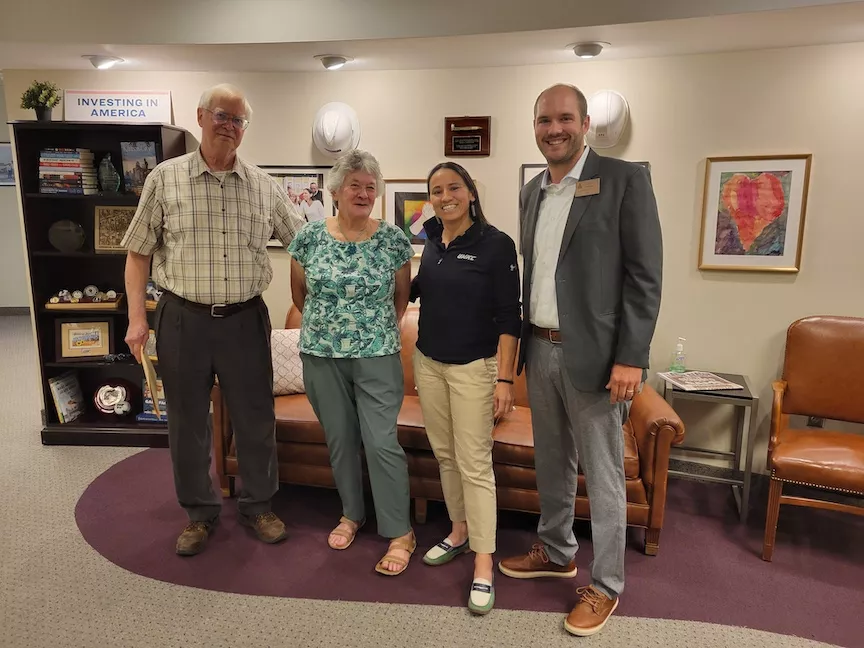
By Craig Volland, Kansas Chapter Agriculture Chair
Congress is expected to resume work on a first draft of the 2023 Farm Bill after the August recess but passage is not expected before expiration of the 2018 Farm Bill on September 30, 2023. Representative Davids is a member of the House Agriculture Committee.
We met with Representative Davids in August to explain Sierra Club's main concerns about current agriculture policy as Congress continues its work on the 2023 Farm Bill.
CAFOs. Some 50 years after the passing of the Clean Water Act, water quality in most of the nation is no longer improving. That’s because of excess nutrients (phosphorus and nitrogen) that cause hazardous algal blooms in lakes and streams. The primary source is inadequately regulated concentrated animal feeding operations (CAFOs), also referred to as animal factories, that collect massive amounts of manure and apply it to fields subject to runoff into surface water.
We need to end all direct subsidies (EQIP) to CAFOs and shift massive indirect subsidies that go to crops used for CAFO animal feed to a widely diversified list of food crops. In 2022, 43% of corn production went to animal feed and 44% to ethanol. Similarly, 66% of soybean production, that was not exported, was used for animal feed. In other words, we should prioritize the production of healthy food, not feed and fuel.
Equity. The other problem with subsidies in the Farm Bill is they go primarily to the largest operations who specialize in industrial-scale monocrops using methods that damage the land. More of these funds should go instead to smaller, diversified family farms, including historically disfavored minority people of color, who are more likely to specialize in
growing a variety of crops and to better support rural communities. We also need to support Urban Agriculture as part of community food systems.
Climate Change and Regenerative Agriculture. Corporate dominated agriculture in the US, using a range of industrial scale methods to maximize profits, is a major source of emissions causing Climate Change. Roughly half of the carbon present in our soils at the beginning of cultivation in the US has been lost due to soil erosion from bare fields, chemical toxicity to soil ecology and oxidation of humic material from continual plowing. We can return much of this carbon to the soil by known methods that focus on maximizing soil health, such as reduced tilling, cover crops, crop rotations, elimination of toxic chemicals that inhibit natural soil ecology, better water retention and returning crop residues to the soils. For many years these favorable techniques were called “conservation agriculture.” Now it is more often called Regenerative Agriculture. Globally the potential to sequester carbon from the atmosphere is estimated in billions of tons per year. It is crucial that the new Farm Bill incentivize farmers who employ the techniques of Regenerative Agriculture.